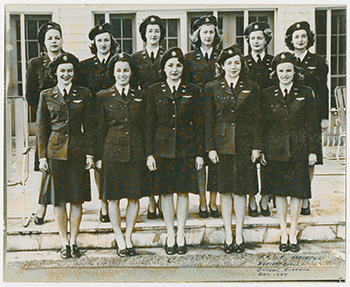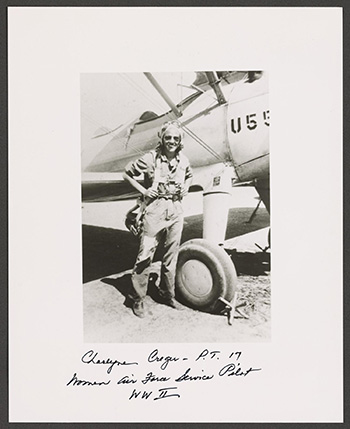The Groundbreaking Stories of American Women Aviators in World War II
Uplifting the History of the Pilots Who Confronted Gender Barriers to Women in Uniform
By Erica Jaros


Women had been serving in critical civilian support roles for the military since the American Revolution. However, during World War II, attitudes toward women in uniform began to change. Approximately 350,000 American women volunteered for service in the Nurses Corps, the Women’s Army Auxiliary Corps (WAACs), the Women’s Air Force Service Pilots (WASPS), and many other capacities. But it was not until President Harry S. Truman signed the Women's Armed Services Integration Act into law on June 12, 1948 that women were able to serve as permanent, regular members of the U.S. military and be recognized as veterans.
“I firmly believe the WASP story has become a compelling part of our history,” said Terri Blackwell, project manager at the Abilene Library Consortium. “And in return for the sacrifices of these women, we are charged with safeguarding the WASP legacy for future generations of American men and women.”
The National WASP WWII Museum reached out to the Abilene Library Consortium (ALC) for assistance in developing an online collection utilizing the University of North Texas and the Portal to Texas History. The ALC received a TexTreasures grant totaling $32,055 through the Texas State Library and Archives Commission and the Institute of Museum and Library Services that enabled them to make 2,448 items digitally available to the public.
“Making the collection available on the Portal to Texas History was important to provide more public access and increase awareness,” said Ann Haub, lead archivist at the National WASP WWII Museum. “The portal provides ease of access for the general public to the WASP story which has inspired generations to follow their dream—especially women in aviation.”
The two-year project focused on the preservation and digitization of a vast number of photographs, diaries, training schedules, classwork, training manuals, and letters donated by former student pilots and their families.
“Through our efforts, we were able to preserve the history of women pilots who confronted gender barriers and served their country through participation in military air support,” said Blackwell. “As women continue to rise to positions of authority and leadership in our society, it is important that modern women can look to heroes that came before them.”

As a consortium of libraries, the ALC felt obligated to contribute to this project because of the impact the WASP had on West Texas and American women.
From 1942 to 1944, more than 1,000 women completed training at Avenger Field, in Sweetwater, Texas. After graduation, they were stationed at 120 air bases across the country, relieving male pilots for combat duty. Throughout the program, WASPs ferried, tested and delivered planes across the country. They flew all types of military planes, pulled targets for live ammunition anti-aircraft training, flew simulated strafing missions, and aided in training male navigators, bombardiers, and gunners.
“Our goal is to make sure the WASPS are permanently remembered,” said Haub. “We hope that their courage and accomplishments continue to inspire future generations of women and all who view the collection.”
WASP pilots received hundreds of commendations during the war. After the program ended, the Army Air Force acknowledged that the female pilots performed in an exemplary manner and worked well with their AAF counterparts. It was finally recognized that WASPs had served as well as men and this had a tremendous impact on the future of women in the military.
“The WASP represent the human desire to accomplish one's dreams, to use one's mind for learning, and to not be defined by stereotypes,” said Blackwell. “By remembering that WASPs sacrificed a lot, sometimes their lives, for ideals that modern women still strive to achieve, we realize that these women were truly heroes.”